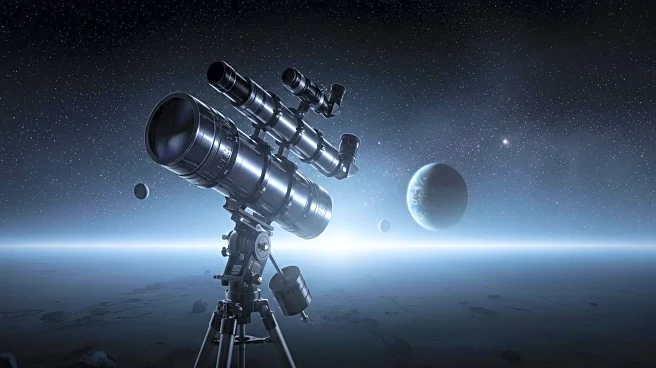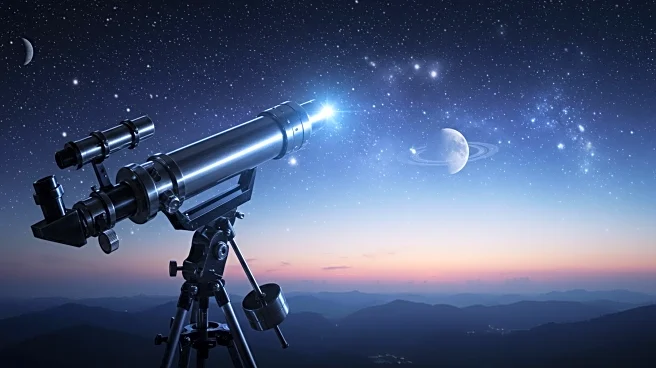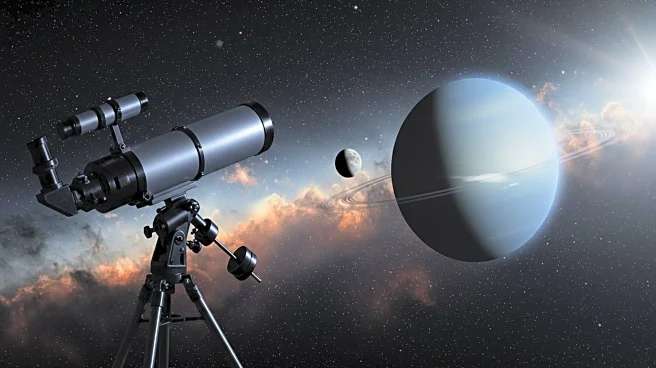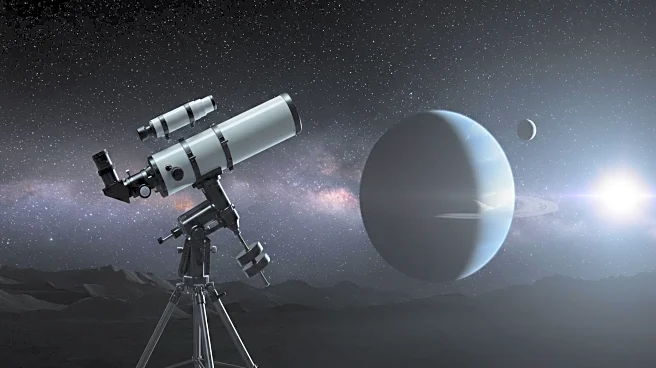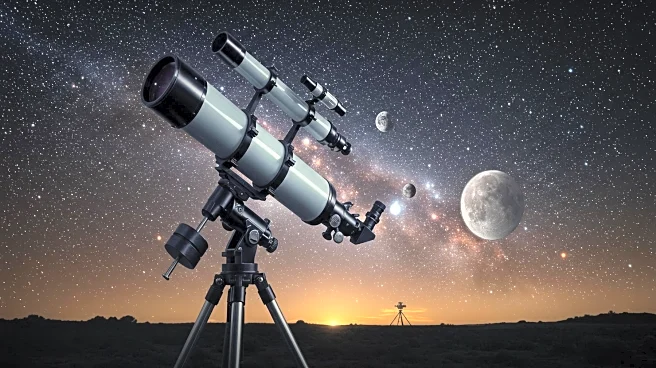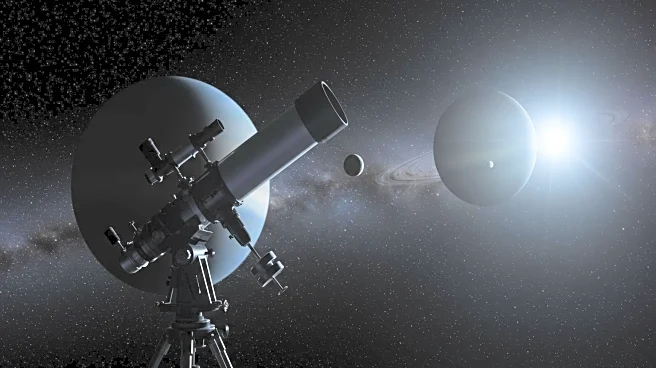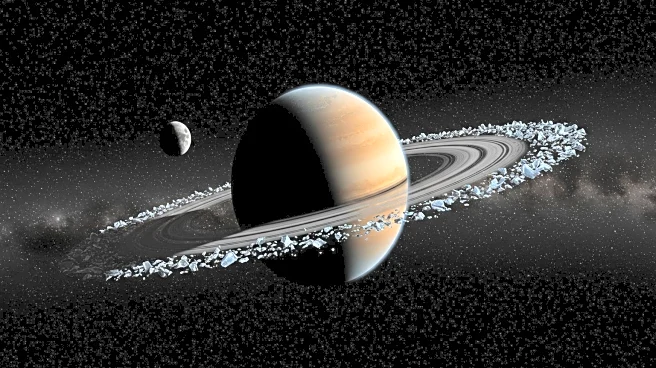What's Happening?
NASA's James Webb Space Telescope has identified a tiny moon orbiting Uranus, increasing the planet's known satellites to 29. The moon, detected by the Near-Infrared Camera (NIRCam), is located 35,000 miles from Uranus and is estimated to be six miles in diameter. This discovery was made in early February and marks a significant achievement, as the moon was not visible during Voyager 2's flyby nearly 40 years ago. The moon's almost perfectly circular orbit suggests it formed near its current location, adding to the complexity of Uranus' moon system.
Why It's Important?
The discovery of this new moon highlights the capabilities of the James Webb Space Telescope in detecting small celestial bodies that were previously undetectable. Uranus' moon system, with its numerous small inner moons, suggests a chaotic history that blurs the boundary between a ring system and a system of moons. This finding could lead to further insights into the formation and evolution of Uranus' satellite system, impacting our understanding of planetary systems and their dynamics.
What's Next?
Scientists may conduct further observations to explore the characteristics and interactions of the newly discovered moon with Uranus' rings and other moons. The International Astronomical Union will need to approve an official name for the moon. This discovery may prompt additional research into the complex dynamics of Uranus' satellite system, potentially revealing more about the planet's history and the processes that govern moon formation.
Beyond the Headlines
The discovery of this moon may have implications for understanding the broader dynamics of planetary systems. The intricate relationships between Uranus' moons and rings could offer insights into similar systems elsewhere in the universe. Additionally, the advanced capabilities of the James Webb Space Telescope may lead to further discoveries of small celestial bodies, enhancing our knowledge of the solar system's diversity.
